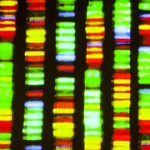Sterile liver tissue samples from the same control donors were compared with tissues from AIH and cirrhosis patients. Cirrhosis patients were selected as a positive control because they are known to have grossly impaired gut barriers.
Studies of rDNA sequencing and PCR showed E. gallinarum predominated in diseased tissue. The majority of AIH biopsies, but not the healthy controls, was positive for this bacterium. There were also enhanced adaptive immunity responses to E. gallinarum because the majority of AIH and SLE patients showed increased antibody titers against it and, particularly, its RNA. The latter could act as a cross-reactive stimulus to drive immune deposits in lupus kidney disease.
“This shows that the bacterium triggers immune reactions and pathways of the immune system that are important in autoimmunity such as those leading to Th17 cells,” says Dr. Kriegel. “We have found that certain bacteria that cross the gut barrier induce cytokines and immune pathways leading to inflammation.”
Ro60 Autoantigen as a Trigger for SLE
The other article appeared in Science Translational Medicine. Dr. Kriegel, together with co-lead author Sandra L. Wolin, MD, PhD, from the RNA Biology Laboratory at the National Cancer Institute and professor emeritus at Yale, and associates looked at orthologs of the Ro60 autoantigen as possible triggers for autoimmune responses in SLE.2
“The earliest antibodies in lupus are directed against the RNA binding autoantigen Ro60, but the persistent triggers against the evolutionarily conserved antigen remain elusive,” Dr. Kriegel wrote in the article. “We identified Ro60 orthologs in a subset of human skin, oral and gut commensal bacterial species and confirmed their presence in patients with lupus and healthy controls. We hypothesized that Ro60 orthologs may trigger autoimmunity via cross-reactivity in genetically susceptible individuals.”
Sera from human anti-Ro60-positive SLE patients were found to bind to bacterial Ro60 proteins. CD4 memory T cell clones for the human Ro60 autoantigen were activated by proteins and peptides from skin and mucosal Ro60-containing bacteria. This, according to the authors, is supportive of T cell cross-reactivity in humans.
Spontaneous Anti-Human Ro60 Antibody Production
Further indications were seen when germ-free mice monocolonized with one Ro60-containing bacterium spontaneously began producing anti-human Ro60 T and B cell immune responses. The researchers also developed glomerular immune complex deposits after monocolonization. This suggested a linkage between Ro60 responses in vivo, with production of Ro60 autoantibodies coinciding with signs of autoimmunity.
“Both of these studies deal with the role of the microbes living in our gut and other places, like the skin, in autoimmune diseases, such as SLE,” says Dr. Kriegel. “One important takeaway from the translocation study is that there are certain circumstances in which bacteria can get into our living tissues without being an infectious agent in the usual way. They don’t make us sick as pathogens do, but live within us and trigger autoimmune pathways.”
Biomarkers & Treatments Possible
The researchers also think these findings may make it possible to develop biomarkers. Then it might be possible to develop treatments that stop SLE and other autoimmune diseases early enough to avoid major damage.


